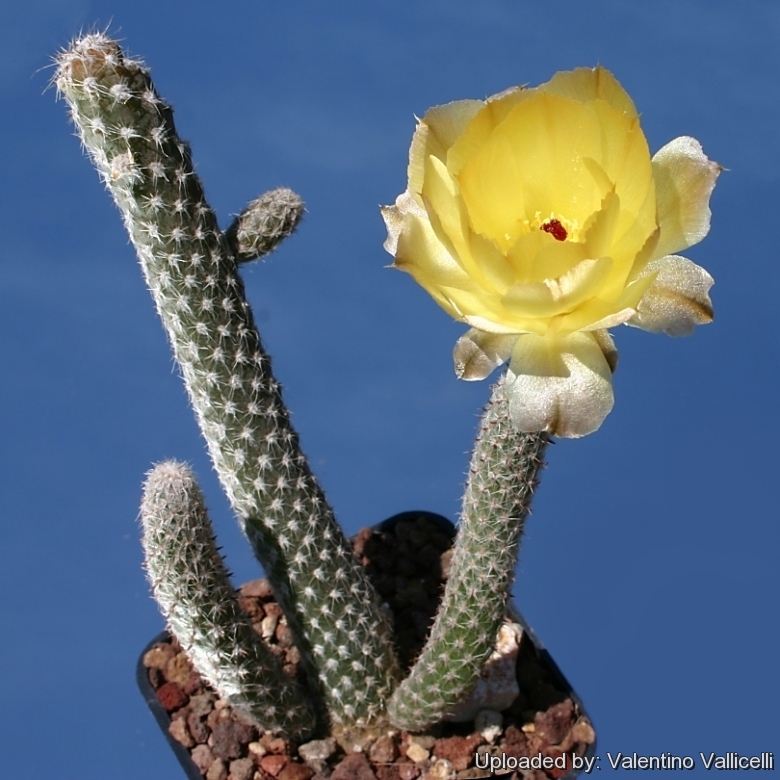
Pterocactus megliolii Photo by: Valentino Vallicelli
Pterocactus is a rare tuberose cactus that grows with almost the entire plant underground. The flowers appear at the apex of young stems.
Origin and Habitat: Endemic to Argentina (San Juan: north of San Juan)
Ecology: these plants have a peculiar reproductive mechanism: they have the ability to lose their sprouts in autumn and winter. These are then spread by strong winds and volatile sands, and can give origin to a new plant in the next vegetative season. The Pterocactus tuberose roots will grow new floriferous stems again.
Synonyms:
Description: It is a geophyte cactus, with strong underground tap-roots and deciduous branches.
Stem: The thin cylindrical segment usually arises basally from the root-stock (or rarely joined). Stems are green to brown, 3-10 cm long and 0,5-1 cm in diameter.
Root: Strong, napiform, cream-coloured, up to 15 (or more) cm long.
Areoles: Very woolly, without (or with very few) glochids.
Central spines: 4-5, brown (more or less light)
Radial spines: 10-20: very small, glassy, placed almost horizontally against the stem's surface, up to2 mm long.
Flowers: Diurnal, rotate, yellow to dirty-yellow, up to 3 cm in diameter, growing apically at the tip of new stems without a clear floral tube distinguishable.
Blooming season: Summer.
Fruit: Dry and larger than the stem itself, dehiscing transversally in the upper part, opening up like a cap and setting the seed free.
Seed: Typical of the genus, winged, with a strongly flattened aril; uneven on its periphery.
Remarks: In the wild during severe droughts, the aerial green shoots die back to the underground rootstock. Once rains return, the rootstock produces new green shoots that grow upward until they reach the soil surface. Similarly in cultivation - when top growth is pruned, the plants produce new green stems bearing terminal flowers that open in the late spring or early summer. In any case old Pterocactus branches easily detach spontaneously at the smallest collision. They are nearly deciduous!!! Sometimes a very fragile corky necrotic brown zone forms at the branches' base, helping the shoots to break up at the point of union of root and shoot systems. This helps the plant to naturally produce new floriferous stems.
Bibliography: Major references and further lectures
1) Nathaniel Lord Britton, Joseph Nelson Rose “Cactaceae: Descriptions and Illustrations of Plants of the Cactus Family” Courier Dover Publications, 1963
2) Edward Anderson “The Cactus family” Timber Press, Incorporated, 2001
3) James Cullen, Sabina G. Knees, H. Suzanne Cubey "The European Garden Flora Flowering Plants: A Manual for the Identification of Plants Cultivated in Europe, Both Out-of-Doors and Under Glass" Cambridge University Press, 11/Aug/2011
4) David R Hunt; Nigel P Taylor; Graham Charles; International Cactaceae Systematics Group. "The New Cactus Lexicon" dh books, 2006
5) Haustein, Erik “Der Kosmos-Kakteenführer” Kosmos (franckh-kosmos) 1998 ISBN: 3440076857
6) Edgar Lamb, Brian Lamb “The Illustrated Reference on Cacti & Other Succulents” Volume 5 Blandford Press, 1978
7) John Borg “Cacti: a gardener's handbook for their identification and cultivation” Blandford P., 1970
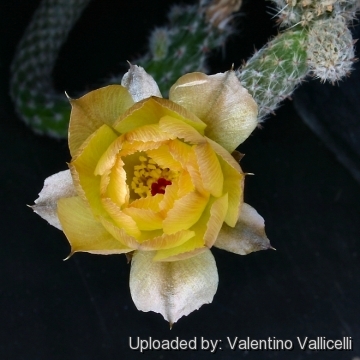 Pterocactus megliolii Photo by: Valentino Vallicelli
Pterocactus megliolii Photo by: Valentino Vallicelli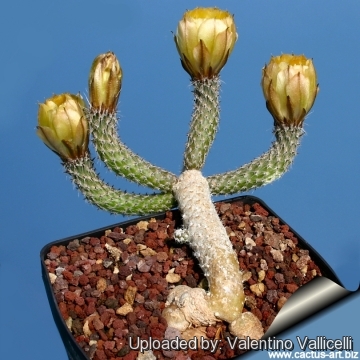 Pterocactus megliolii Photo by: Valentino Vallicelli
Pterocactus megliolii Photo by: Valentino Vallicelli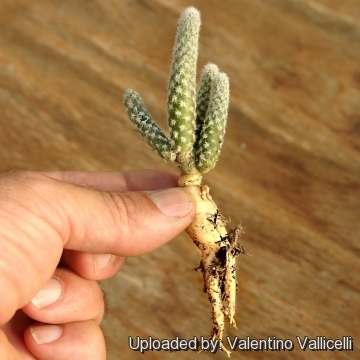 Pterocactus megliolii Photo by: Valentino Vallicelli
Pterocactus megliolii Photo by: Valentino Vallicelli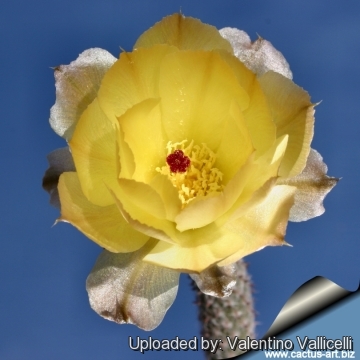 Pterocactus megliolii Photo by: Valentino Vallicelli
Pterocactus megliolii Photo by: Valentino Vallicelli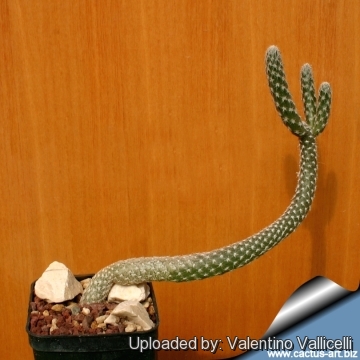 Pterocactus megliolii Photo by: Valentino Vallicelli
Pterocactus megliolii Photo by: Valentino Vallicelli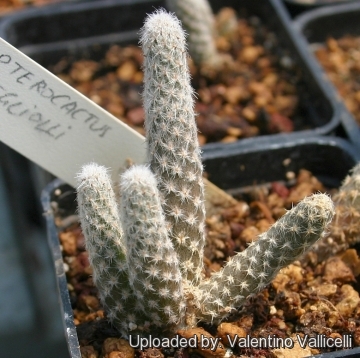 Pterocactus megliolii Photo by: Valentino Vallicelli
Pterocactus megliolii Photo by: Valentino Vallicelli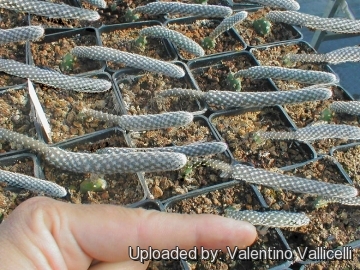 The ranches tends to fold up in the same direction: west!!! Photo by: Valentino Vallicelli
The ranches tends to fold up in the same direction: west!!! Photo by: Valentino Vallicelli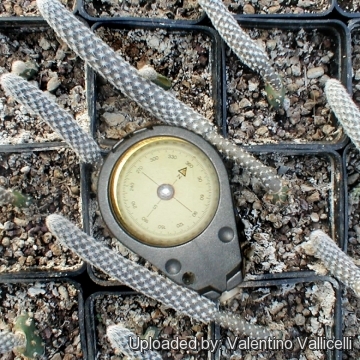 The ranches tends to fold up in the same direction: west!!! Photo by: Valentino Vallicelli
The ranches tends to fold up in the same direction: west!!! Photo by: Valentino VallicelliCultivation and Propagation: Pterocactus meglioliiSN|19639]]SN|19639]] is easy to grow, provided it is kept cool, but dry during autumn and winter. It is a particular favourite of caudiciform plant enthusiasts.
Growth rate: Plants grow very slowly and caudex take many years to enlarge. Clustering in cultivation, if grown correctly, it will reward the grower with generous displays of flowers.
Caudex exposure: The remarkable tuberous rootstock (caudex) is often raised above the soil line so that this can be seen and more readily appreciated. For best results the tuber must be exposed only when plans become mature enough, usually after several years of underground growth, as the exposed caudex will no longer increase in size once it has been lifted above the soil line.
Potting medium: Use a cactus mix or add extra perlite or pumice to regular soil potting soil. A gritty, very free-draining compost is suitable, and clay pots help the plants to dry out between watering. For best results, use a deep pot.
Fertilization: Need a perfect fertilizer diet in summer. Use preferably a cacti and succulents fertilizer with high potassium content including all micro nutrients and trace elements or slow release fertilizer.
Watering Needs: Water normally in the growing season from March to October. No water should ever be allowed to stand around the roots. Keep almost completely dry in winter. The swollen caudex makes it very tolerant of under watering.
Hardiness: It is quite frost resistant if kept dry, hardy as low as -15° C. It can be grown outdoors in the summer months to benefit from direct exposure to light, and especially exposure to high summer temperatures. Recommended Temperature Zone: USDA 9-10.
Sun Exposure: It is essential to give full sun; otherwise they will become atypical. If grown in full sun, the new growth will flower profusely in spring and summer.
Rot: Rot it is only a minor problem with pterocacti if the plants are watered and “aired” correctly. If they are not, fungicides won't help all that much. The plant turns immediately to mush when over watered, or watered out of season. Care must be given in watering, keeping them warm and wet while growing, and cooler and dry when dormant.
Maintenance: Most of the slender stems become detached during winter, but some advise to help the plant by pruning all the top growth in autumn, to encourage it to produce stems with terminal flowers in the spring.
Reproduction: Seeds or cuttings. The seed should be planted in spring. Germination usually occurs within about one week to one month. Seed germinate at 15-21 °C.
Your Photos
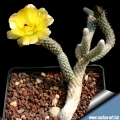
by Valentino Vallicelli



















